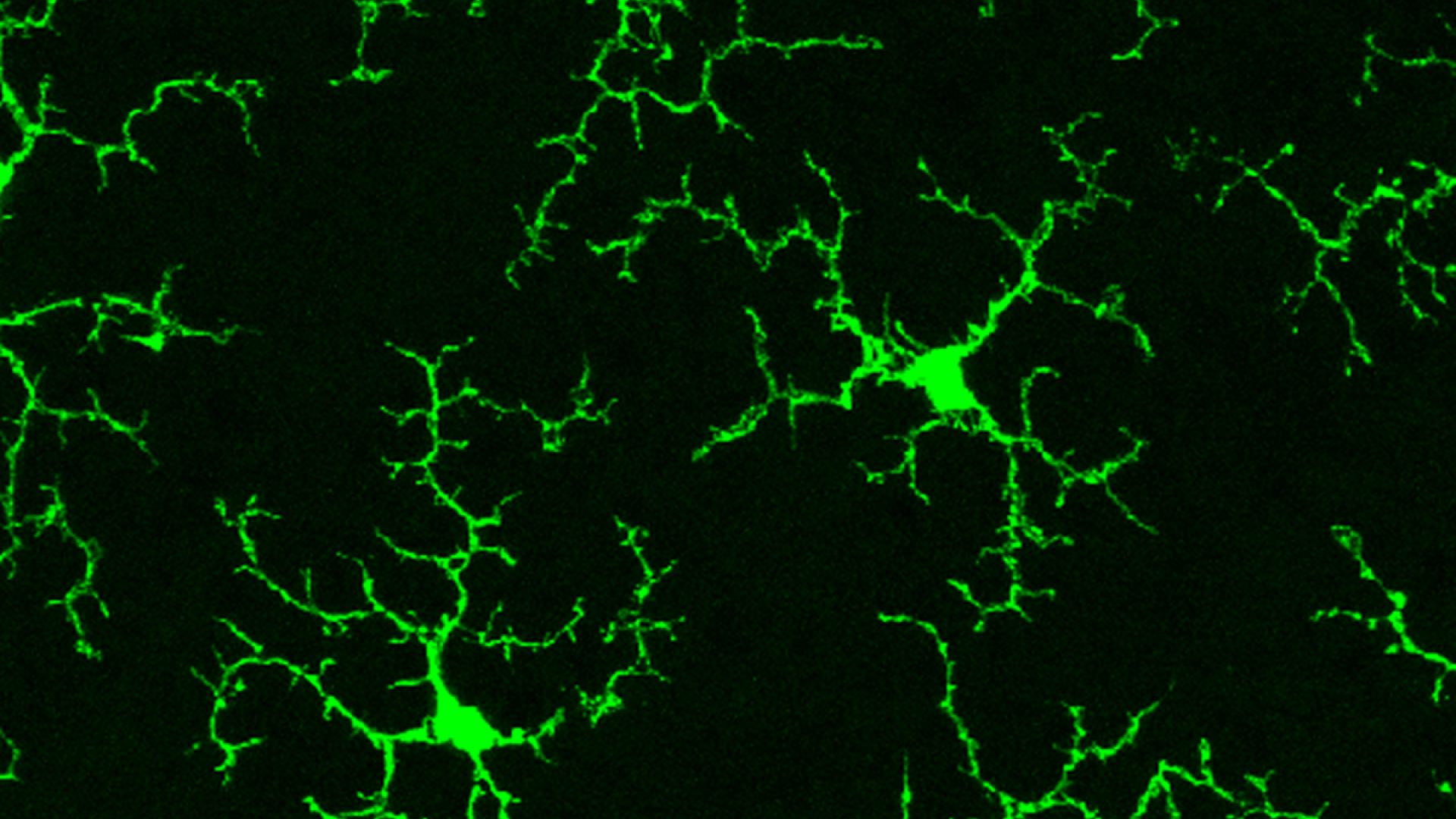Blocking a “Master Switch” in the Eye’s Immune Cells to Treat Glaucoma
Written By: Lisa Catanese Freelance Writer
Written By: Lisa Catanese Freelance Writer

BrightFocus-funded research has shed new light on a way to block a “master switch” in the microglia, immune cells of the eye and brain that control inflammation, introducing a possible target for combatting glaucoma as well as other neurodegenerative diseases.
Researchers from China and the U.S., including BrightFocus National Glaucoma Research grantee Kin-Sang Cho of the Schepens Eye Research Institute of Massachusetts Eye and Ear at Harvard Medical School, targeted i- (IGFBPL1), a member of the Insulin-like Growth Factor Binding Proteins (IGFBP superfamily. They discovered that administering IGFBPL1 halted vision loss from glaucoma. The results of the study were published in the open-access journal Cell Reports.
Neurodegenerative diseases like glaucoma, as well as Alzheimer’s and Parkinson’s diseases, involve damage to nerve cells in the brain and nervous system. In glaucoma, an imbalance in the production and drainage of the fluid in the eye raises the pressure within the eye.
This increase in pressure harms retinal ganglion cells, which serve as the eye’s “camera” to transmit images formed by the retina to the brain. The result is damage to the optic nerve, leading to blind spots in the field of vision and, over time, blindness.
IGFBPL1 works to regulate microglia, which are unique immune cells in the brain and retina. Microglia are responsible for the elimination of germs, dead cells, collections of proteins, and other foreign matter that threaten the central nervous system. Most importantly, they are critical mediators of neuroinflammation.
Changes in the way microglia work are connected to aging as well as neurodegeneration. The research team showed that IGFBPL1 “switched off” inflamed microglia, restoring them to their normal state, which prevented excess neuroinflammation.
Neuroinflammation is a culprit in numerous diseases and controlling it has proven difficult. Researchers funded by BrightFocus and other organizations have examined myriad ways in which it may be controlled. But the signals within the brain connected with this type of inflammation have not been fully understood.
In this study, researchers administered therapeutic doses of IGFBPL1 to mice with glaucoma. The researchers found that this restored stability in microglia, which reduced inflammation, protected RGCs, and prevented vision loss. They found the effects to be strong and lasting.
The researchers concluded that IGFBPL1 administration could offer a new therapeutic strategy for protecting RGCs and preserving vision in glaucoma. It also has the potential to treat other neurodegenerative diseases, since inflammation is an underlying cause.
Glaucoma is a leading cause of irreversible blindness worldwide and is the most common age-related neurodegenerative disease, affecting about 80 million people.
Current treatment involves controlling pressure within the eye with eye drops, lasers, or surgery to drain a buildup of fluid. Advances in the study of genetics, however, have given researchers powerful tools to identify targeted molecules, such as IGFBPL1, by exploring complex cell networks.
The findings by the research team may offer new hope for the treatment, or even prevention, of glaucoma and related neurodegenerative diseases in the future.
BrightFocus Foundation is a premier global nonprofit funder of research to defeat Alzheimer’s, macular degeneration, and glaucoma. Since its inception more than 50 years ago, BrightFocus and its flagship research programs—Alzheimer’s Disease Research, Macular Degeneration Research, and National Glaucoma Research—has awarded more than $300 million in research grants to scientists around the world, catalyzing thousands of scientific breakthroughs, life-enhancing treatments, and diagnostic tools. We also share the latest research findings, expert information, and resources to empower the millions impacted by these devastating diseases. Learn more at brightfocus.org.
Disclaimer: The information provided here is a public service of BrightFocus Foundation and is not intended to constitute medical advice. Please consult your physician for personalized medical, dietary, and/or exercise advice. Any medications or supplements should only be taken under medical supervision. BrightFocus Foundation does not endorse any medical products or therapies.

Schepens Eye Research Institute of Massachusetts Eye and Ear
Support Groundbreaking Glaucoma Research
Your support helps fund critical research that could prevent vision loss, provide valuable information to the public, and cure this sight-stealing disease.
Donate Today